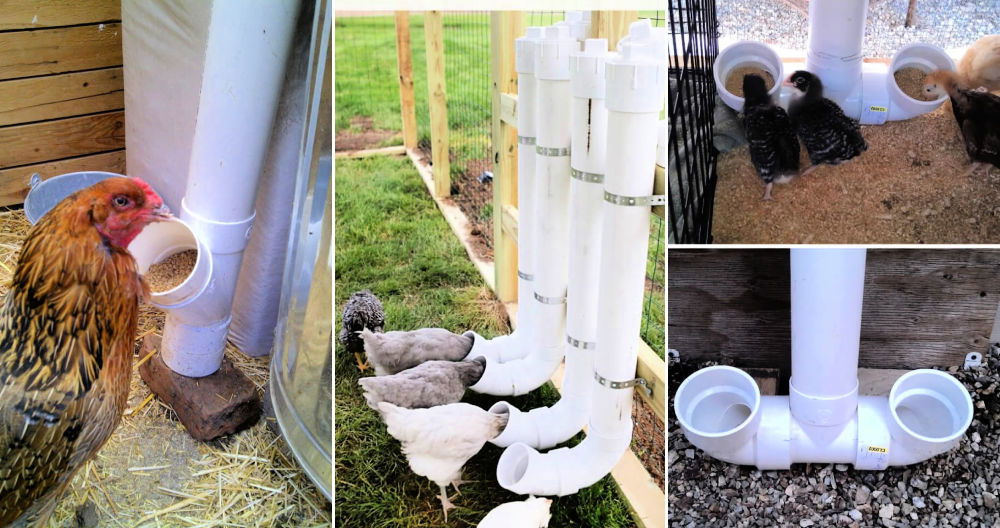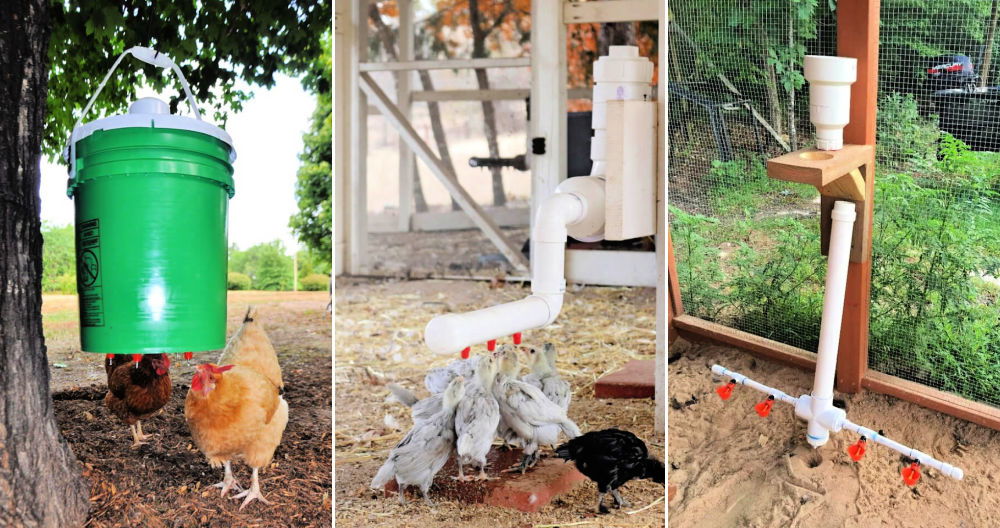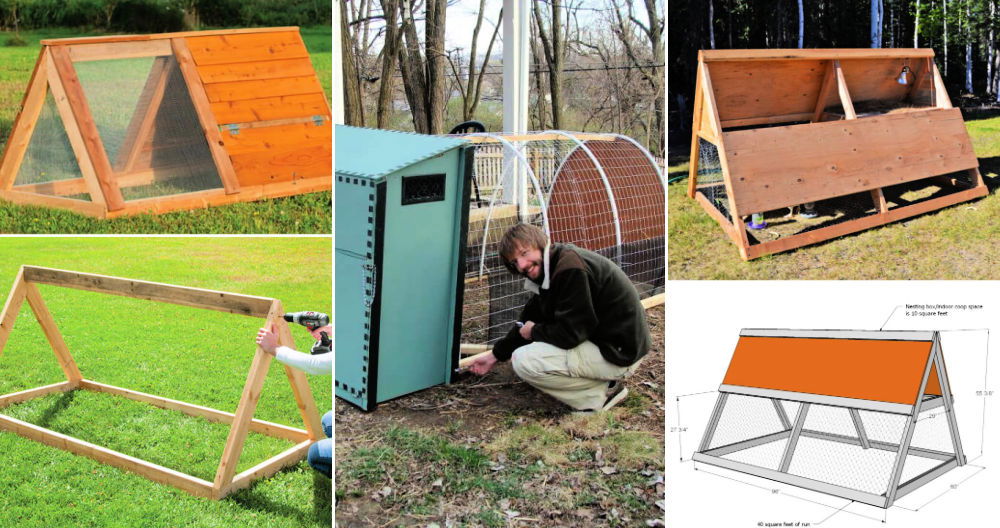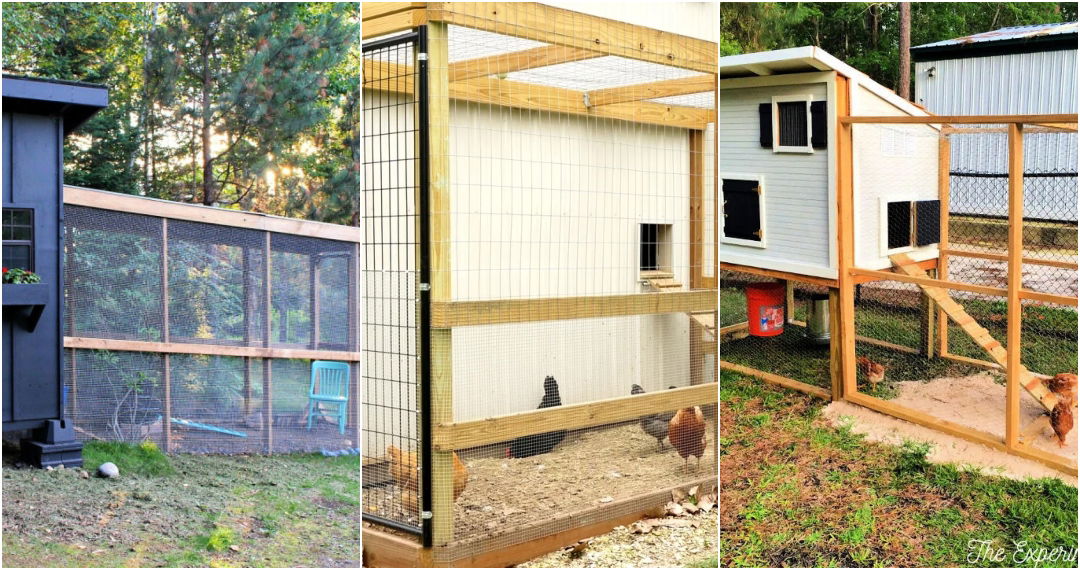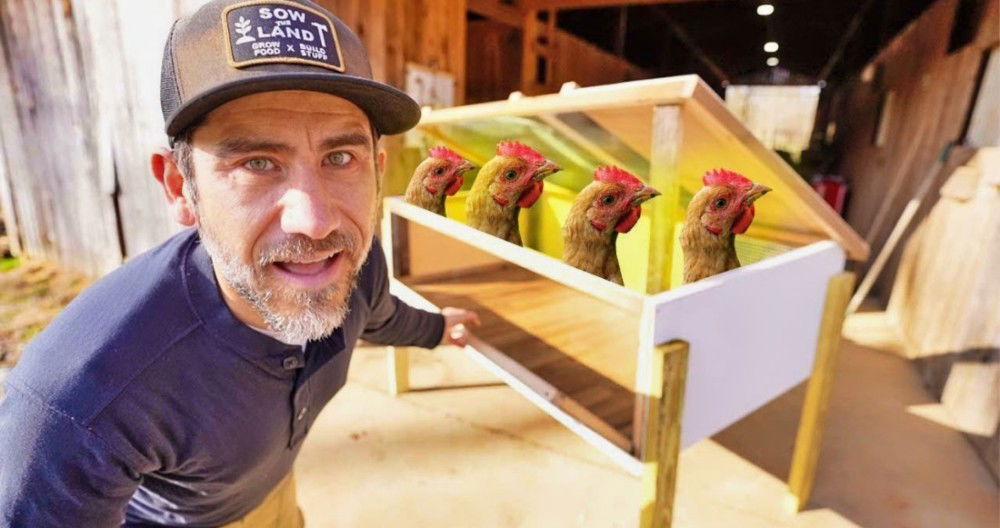Raising chickens in your backyard can be a rewarding experience, offering fresh eggs, natural pest control, and the joy of connecting with nature. However, a comfortable and spacious coop is crucial for your chickens' health and happiness. Many chicken owners struggle with finding the right coop that combines functionality, affordability, and ease of maintenance for a larger flock. This guide will walk you through building a DIY chicken coop capable of comfortably housing 20 chickens, offering them a safe and cozy home.
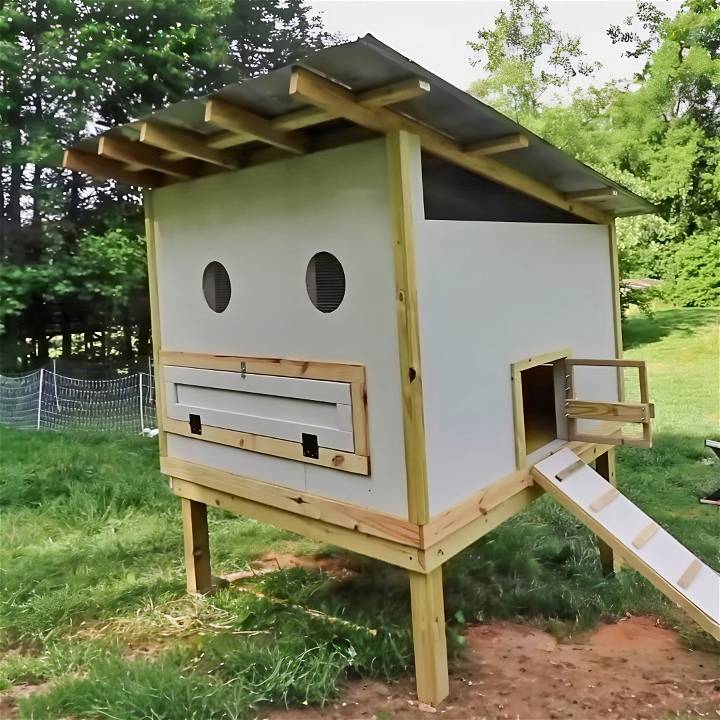
By following this guide, you'll benefit from a custom-built coop tailored to your flock's needs, ensuring optimal living conditions. With clear, expert advice and step-by-step instructions, even those new to carpentry can undertake this project confidently. Expect to spend a weekend on this project, with a difficulty level suitable for intermediate DIYers.
Preparation: Setting the Stage for Your Chicken Coop Build
Before diving into the construction process, gathering all necessary materials and tools is crucial. This preparation ensures a smooth building experience, preventing any unnecessary interruptions.
Materials/Tools:
- 4x4 pressure-treated lumber (for the base)
- 2x6 and 2x4 lumber (for framing and flooring)
- 3/4" plywood or OSB (for the floor and nesting boxes)
- 1/4" plywood sheets (for walls)
- Metal roofing material
- Screws, nails, and metal brackets for assembly
- Paint or sealant for weatherproofing
- Wire mesh for ventilation areas
- Hinges and latches for doors and access points
Important Pre-Steps:
- Choose the Location: Select a well-drained, shaded area to keep your chickens comfortable during hot weather.
- Plan the Layout: Consider access to sunlight, wind direction, and ease of access for cleaning and egg collection.
Step-By-Step Instructions: Crafting Your Chicken Coop
Building a chicken coop for 20 chickens requires attention to detail and a structured approach. Follow these steps to ensure a successful build.
1. Construct the Base
- Lay Out the Posts: Mark the corners of your coop area and dig holes for the 4x4 posts, ensuring they are set deep enough to prevent frost heave.
- Secure the Posts: Place the posts in the holes, use a level to ensure they're straight, then pour concrete around them for stability. Allow the concrete to cure.
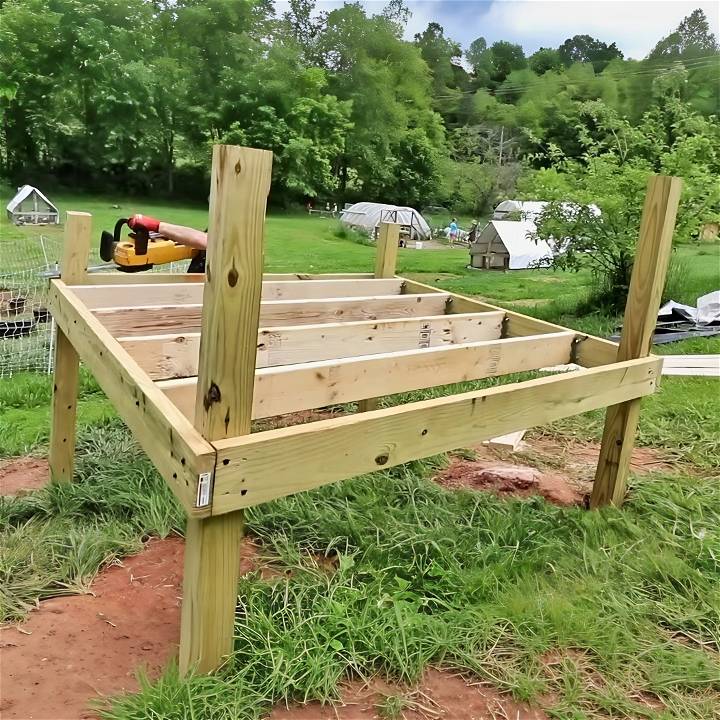
2. Frame the Coop
- Floor Framework: Using 2x6 lumber, build a frame for the coop floor, attaching it to the base posts.
- Wall Construction: Frame the walls with 2x4 or 2x3 lumber, considering window and door placements for ventilation and access.
3. Add Flooring and Walls
- Install the Floor: Lay 3/4" plywood or OSB on the floor frame and secure it.
- Wall Sheathing: Attach 1/4" plywood sheets to the wall frames, cutting out spaces for windows and doors.
4. Construct the Roof
- Truss Assembly: Build roof trusses from 2x4 lumber, ensuring they fit the coop's width and provide adequate slope for drainage.
- Roofing Material: Install metal roofing, securing it to the trusses for a durable, weatherproof cover.
5. Install Doors and Windows
- Doors: Build or repurpose doors, ensuring they fit the openings. Install hinges and latches.
- Windows: Cut out window openings, install wire mesh for ventilation, and if desired, add shutters or a simple glass pane for weather protection.
6. Set Up Interior Features
- Nesting Boxes: Construct nesting boxes within the coop, ensuring easy access for egg collection.
- Roosting Bars: Install horizontal bars for chickens to roost on at night, using 2x4s or round dowels.
7. Finish and Paint
- Seal and Paint: Apply a weatherproof sealant or paint to protect the wood and give your coop a finished look.
- Security Measures: Ensure all openings are secured with wire mesh to protect against predators.
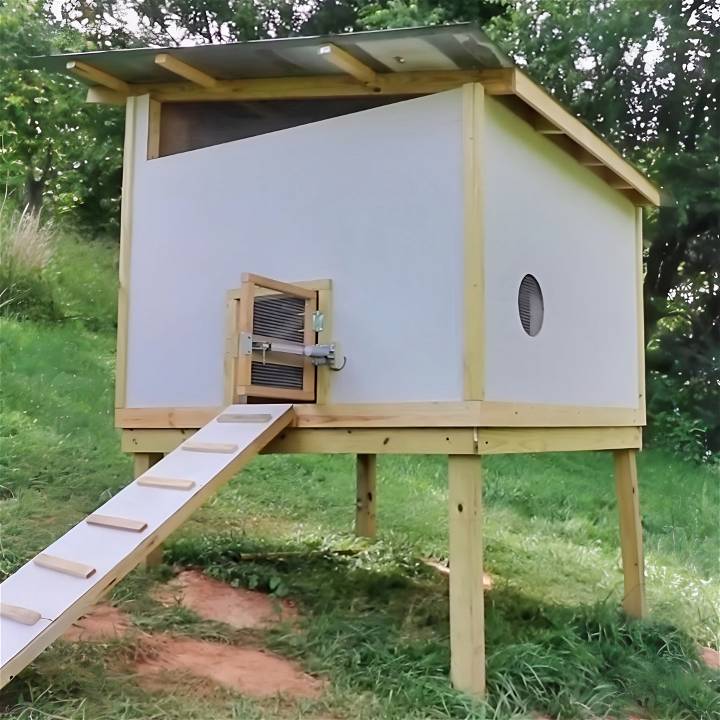
Tips and Tricks for Building a DIY Chicken Coop for 20 Chickens
Building a DIY chicken coop for a flock of 20 chickens requires careful planning, effort, and a bit of creativity. These tips and tricks will help ensure your coop is not only functional but also a cozy haven for your feathered friends. Whether you're a seasoned builder or new to the craft, these insights will guide you towards building the perfect home for your chickens.
Choosing the Right Location
- Sunlight and Shade: Find a balance between sunlight and shade. Chickens need sunlight for vitamin D but also shaded areas to escape the heat.
- Elevation: Choose a high, well-drained area to prevent flooding and ensure a dry coop.
- Accessibility: Make sure the location is easily accessible for you, especially for cleaning and egg collection.
Designing for Comfort and Safety
- Spacious Interior: Ensure at least 3-4 square feet per chicken inside the coop. This provides enough room to move, eat, and sleep comfortably.
- Secure Outdoor Run: An outdoor run attached to the coop should offer 8-10 square feet per chicken. It allows them to enjoy the outdoors safely.
- Predator-Proofing: Use hardware cloth instead of chicken wire for better protection against predators. Secure all doors and openings with locks that cannot be easily opened by raccoons or other clever predators.
Ventilation and Insulation
- Cross Ventilation: Install vents or windows on opposite sides to encourage airflow, keeping the coop fresh and reducing moisture and ammonia levels.
- Insulate for Weather: In cold climates, insulate the walls and roof. Use double-paned windows to keep the warmth in and cold out, but don't compromise on ventilation.
Maintenance and Hygiene
- Easy-to-Clean Design: Consider removable trays under roosting areas and nesting boxes for easier cleaning.
- Regular Cleaning Schedule: Perform spot cleaning weekly and a thorough clean every six months. Keeping the coop clean prevents diseases and keeps your chickens healthy.
Budget-Friendly Building
- Reclaimed Materials: Look for reclaimed wood, windows, and doors. Not only does this save money, but it also adds character to your coop.
- Simplicity: A simpler design can be just as effective. Focus on the essentials first – protection, space, and accessibility.
Final Touches for a Happy Flock
- Nesting Boxes: Provide at least one nesting box for every 4-5 hens. Place them in a quiet, dark area of the coop to encourage egg laying.
- Roosting Bars: Install roosting bars at varying heights to accommodate the pecking order and ensure every chicken has a spot to sleep.
Remember, building a chicken coop is more than just constructing a shelter; it's about building a home. Take your time to plan, prepare, and execute your project. With these tips and tricks, you're well on your way to providing a safe, comfortable, and inviting space for your chickens to thrive. Happy building!
Variations and Customizations
Adapt this basic design to fit your specific needs or preferences. Consider adding a covered outdoor run, automatic waterers, or insulation for colder climates.
Troubleshooting Common Issues
- Leakage: Ensure all roof seams and edges are properly sealed.
- Predator Intrusion: Double-check all entry points and fortify with additional wire mesh or hardware cloth if necessary.
Why This Guide is Different
This guide provides a blend of practical advice, detailed instructions, and customizable options, making it suitable for a wide range of DIY skill levels. Unlike other guides, it emphasizes building a coop that grows with your flock, ensuring long-term satisfaction and usability.
Video Tutorial
For a visual walkthrough of this project, watch our detailed step-by-step video tutorial on YouTube.
This video complements the written guide, offering additional insights and tips.
Summary
Building a chicken coop for 20 chickens can be a rewarding DIY project that enhances your backyard farming experience. By following this guide, you'll build a durable, comfortable home for your flock, ensuring their well-being while adding charm to your outdoor space.
Author Bio
As an experienced DIYer and backyard farmer, I've built several coops and shared my knowledge through writing and tutorials. My passion for sustainable living and animal welfare drives me to help others build optimal living spaces for their chickens.
DIY Chicken Coop for 20 Chickens FAQs
Building a DIY chicken coop for 20 chickens is a rewarding project that can provide a safe and comfortable home for your poultry. Here are some commonly asked questions to help you get started and ensure success with your coop.
How much space do I need for 20 chickens in a coop?
For 20 chickens, you should aim for at least 3-4 square feet per bird inside the coop and about 8-10 square feet per bird in the outdoor run. This means you'd need a coop that's at least 75-100 square feet, with an additional 200-250 square feet for the run.
How can I predator-proof my chicken coop?
To protect your chickens from predators, consider the following measures:
- Bury hardware cloth around the perimeter to prevent digging.
- Use hardware cloth instead of chicken wire for windows and runs, as it's more durable.
- Secure all doors and openings with predator-proof latches.
- Make sure the coop is sturdy and without gaps or holes.
Do I need to insulate my chicken coop?
Insulation is recommended if you live in an area with cold winters. It helps keep the coop warm and prevents the water from freezing. Insulate the walls and roof, and consider double-paned windows to retain heat. However, ensure there is still proper ventilation to prevent moisture buildup.
What kind of ventilation is required?
Proper ventilation is crucial to remove moisture, ammonia, and to provide fresh air. Here are some tips:
- Install vents or windows on opposite sides of the coop to encourage cross ventilation.
- Ensure vents are positioned near the roof to allow warm, moist air to escape.
- Protect ventilation openings with predator-proof mesh.
How often should I clean the coop?
A general rule is to do a complete clean-out every 6 months, but this can vary depending on the size of your coop and the number of chickens. Perform spot cleaning weekly to remove droppings and refresh the bedding. Maintaining cleanliness is crucial for the health of your chickens.
Can I build a chicken coop on a budget?
Yes, building a chicken coop on a budget is possible by:
- Using reclaimed or recycled materials.
- Designing a simpler, more compact coop.
- Doing the labor yourself.
- Comparing prices and shopping for materials on sale.
Building a DIY chicken coop for 20 chickens can be a fulfilling project that enhances your self-sufficiency and provides your chickens with a safe, comfortable home. Remember to plan, prepare, and take your time to ensure the best results for you and your feathered friends.
Conclusion:
In conclusion, building your DIY chicken coop can be a rewarding and affordable project. By following the steps outlined in this guide, you'll be able to build a functional and stylish coop for your feathered friends. Happy crafting!



